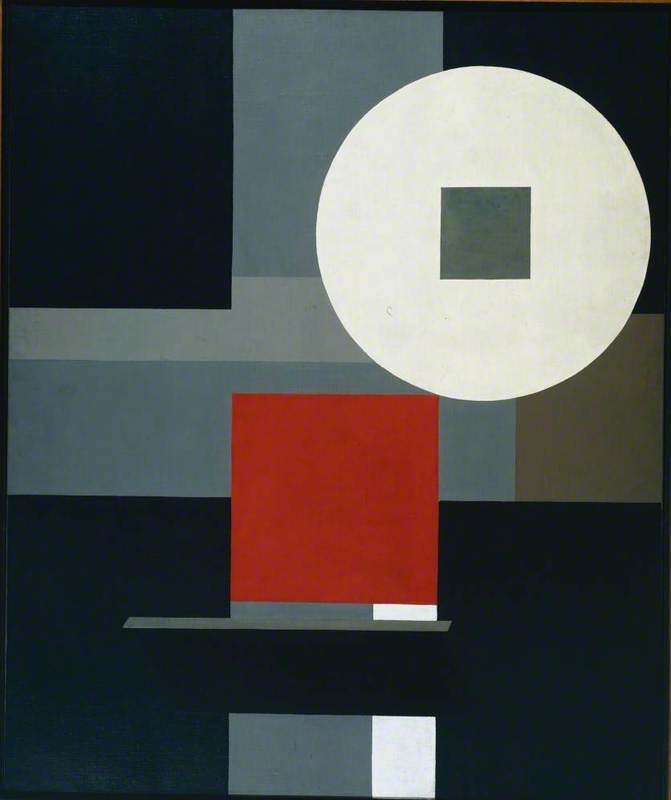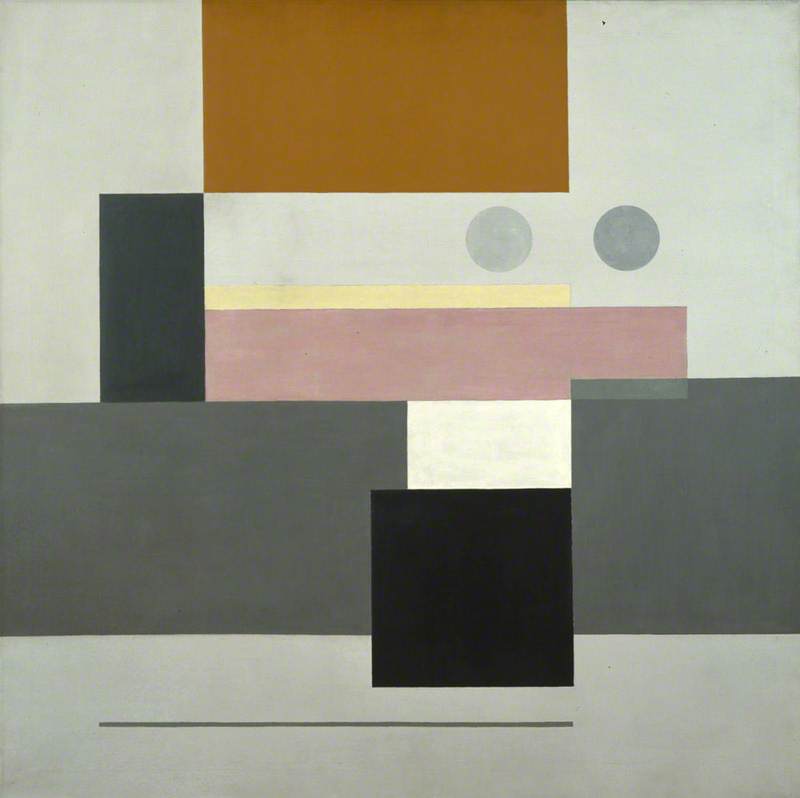German-born abstract painter who settled in the Netherlands in 1938 and became a Dutch citizen; he was one of the first artists to work in an abstract style throughout his entire career. Born in Osnabrück, he moved to Hanover in 1919 to study architecture and sculpture. He began making abstract reliefs in the same year. In Hanover he met *Arp, *Lissitzky, *Schwitters, and most importantly van *Doesberg, through whom he joined De *Stijl in 1924. Vordemberge-Gildewart was to remain faithful to the ideas of De Stijl for the rest of his life. In 1925–6 he lived in Paris and had several other stays there in the next few years, during which he had his first one-man show (in 1929 at the Galerie Povolozky) and became a member of *Abstraction-Création (in 1932).
Read more
He moved from Hanover to Berlin in 1936, then in 1937 left Germany because of the Nazis, going first to Switzerland and then settling in Amsterdam in 1938. As well as painting, his work in the Netherlands included designing window displays for department stores, and he also taught at the Academy in Rotterdam. In 1954 he returned to Germany when Max *Bill appointed him head of the department of visual communication at the Hochschule für Gestaltung in Ulm, and he died in Ulm eight years later. Vordemberge-Gildewart aimed to link art and technology. His work was severely geometrical, influenced by *Suprematism and *Constructivism (he sometimes added relief elements—such as sections of picture framing—to his paintings) and then most deeply by De Stijl. His austerity extended to the naming of his works, which were given numbers rather than conventional titles, as in Composition No. 15 (1925, Tate).
Text source: A Dictionary of Modern and Contemporary Art (Oxford University Press)


